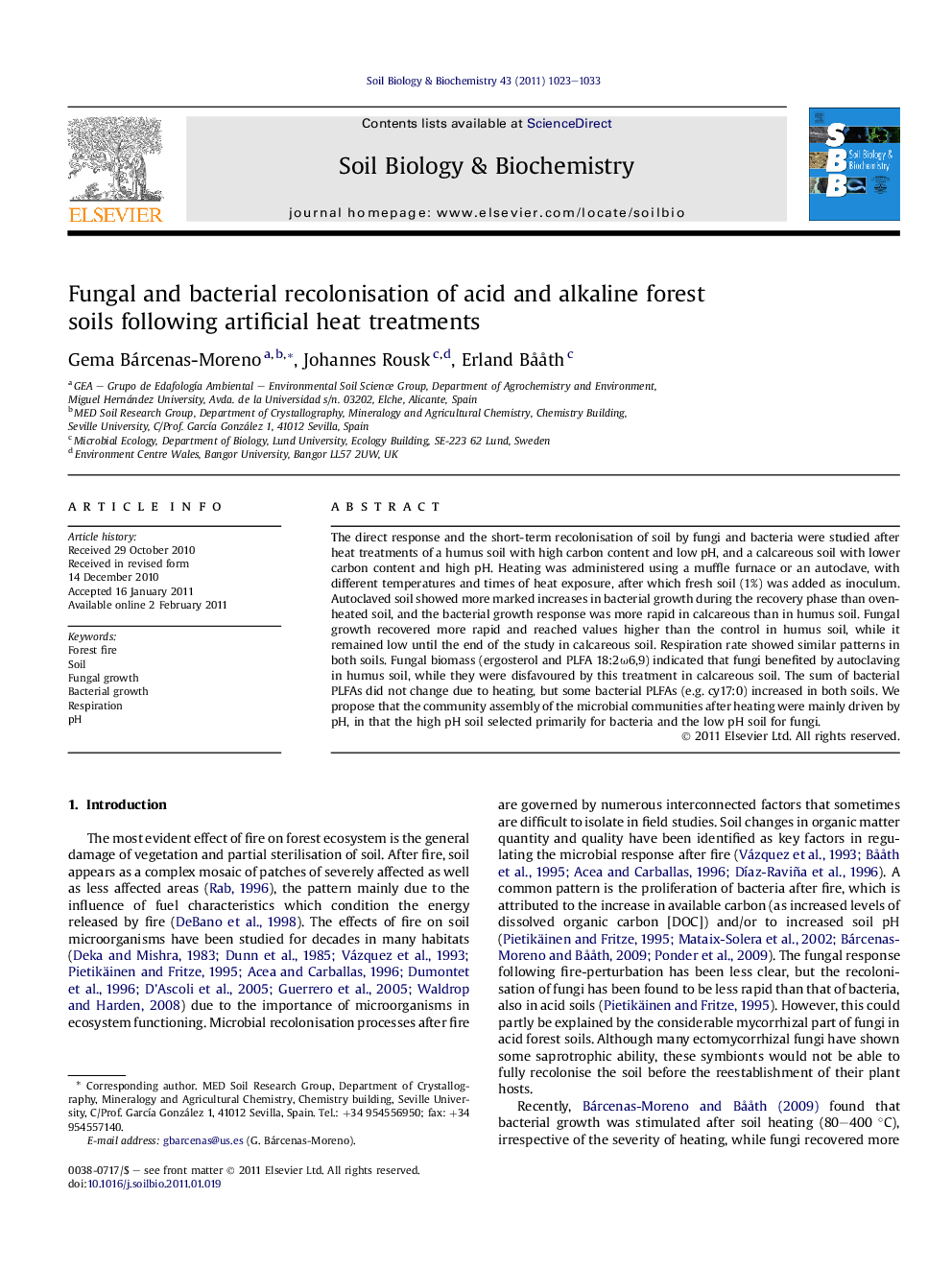| Article ID | Journal | Published Year | Pages | File Type |
|---|---|---|---|---|
| 2025523 | Soil Biology and Biochemistry | 2011 | 11 Pages |
The direct response and the short-term recolonisation of soil by fungi and bacteria were studied after heat treatments of a humus soil with high carbon content and low pH, and a calcareous soil with lower carbon content and high pH. Heating was administered using a muffle furnace or an autoclave, with different temperatures and times of heat exposure, after which fresh soil (1%) was added as inoculum. Autoclaved soil showed more marked increases in bacterial growth during the recovery phase than oven-heated soil, and the bacterial growth response was more rapid in calcareous than in humus soil. Fungal growth recovered more rapid and reached values higher than the control in humus soil, while it remained low until the end of the study in calcareous soil. Respiration rate showed similar patterns in both soils. Fungal biomass (ergosterol and PLFA 18:2ω6,9) indicated that fungi benefited by autoclaving in humus soil, while they were disfavoured by this treatment in calcareous soil. The sum of bacterial PLFAs did not change due to heating, but some bacterial PLFAs (e.g. cy17:0) increased in both soils. We propose that the community assembly of the microbial communities after heating were mainly driven by pH, in that the high pH soil selected primarily for bacteria and the low pH soil for fungi.
Research highlights► Recovery of microbes after soil heating was studied in a low and a high pH soil. ► More intense heating resulted in higher microbial growth during recolonisation. ► Bacterial and fungal growth was favoured in the high and low pH soil, respectively. ► Respiration rate showed similar patterns in both soils. ► This suggests functional redundancy between fungal and bacterial decomposers.
